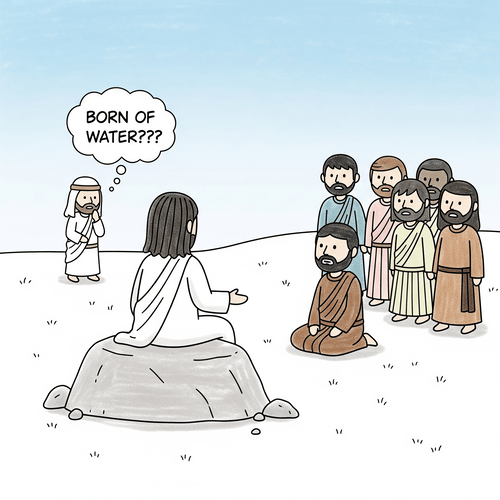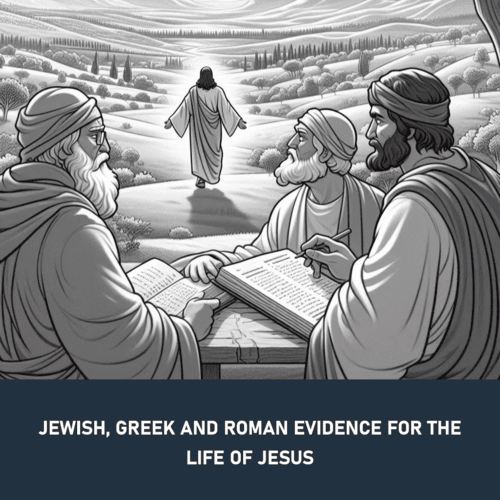Archaeology: Confirming Bible Names, Places, Dates
Confirming Bible Names, Places, Dates: The importance of archaeological evidence in supporting biblical accounts cannot be overstated. While faith remains a cornerstone for many, the physical evidence unearthed by archaeologists offers a compelling testament to the Bible’s historical context. These findings not only corroborate biblical narratives but also enrich our understanding of the ancient world in which these stories unfolded. In this post, we focus specially on Bible figures, places and dates for which we have archaeological evidence.
BIBLICAL FIGURES CONFIRMED
One of the most exciting aspects of biblical archaeology is the discovery of evidence supporting the existence of key figures mentioned in the Bible. Let’s explore some notable examples:
Old Testament Figures:
- King David: The Tel Dan Stele, discovered in northern Israel in 1993, bears an inscription referring to the “House of David,” providing evidence for the existence of this legendary king. Before this find, there was little extra-biblical evidence for King David’s existence, leading some scholars to doubt his historicity. The Tel Dan Stele confirms not only that David was a real figure but also that his dynasty was well-known to Israel’s enemies.
- King Hezekiah: Excavations in Jerusalem have uncovered clay seals (bullae) bearing Hezekiah’s name, confirming his reign as described in the books of Kings and Chronicles.
- Nebuchadnezzar II: The Babylonian Chronicles, a series of ancient cuneiform tablets, confirm the reign of Nebuchadnezzar II, the Babylonian king responsible for the destruction of Jerusalem and the subsequent Babylonian Exile of the Jews. These chronicles align perfectly with the biblical accounts in the books of Daniel and Jeremiah, providing an external source for one of the most significant events in Jewish history.
New Testament Figures:
- Caiaphas the High Priest: In 1990, archaeologists discovered an ornate ossuary (bone box) inscribed with the name “Joseph son of Caiaphas,” likely belonging to the high priest who played a crucial role in Jesus’ trial.
- Pontius Pilate: The Pilate Stone, found in Caesarea Maritima, bears an inscription mentioning Pontius Pilate, prefect of Judea, corroborating the Gospel accounts. Pilate, the Roman governor who presided over the trial and crucifixion of Jesus, was often dismissed as a minor figure until the discovery of the Pilate Stone in 1961. Found in Caesarea Maritima, this limestone block bears an inscription confirming Pilate’s title and role. This discovery provides archaeological proof of Pilate’s existence and his connection to one of the Bible’s most pivotal moments.
BIBLICAL CITIES AND PLACES CONFIRMED
Archaeological excavations have also uncovered evidence for many cities and places mentioned in the Bible, adding credibility to its geographical descriptions:
Old Testament Locations:
- Jericho: Excavations have revealed evidence of a destroyed city dating to the time of Joshua’s conquest. The ancient city of Jericho, famously known for its walls that “came tumbling down” in the book of Joshua, has been the subject of numerous archaeological digs. Excavations led by John Garstang and later Kathleen Kenyon have revealed the ruins of a heavily fortified city. While there is debate over the exact dating, the evidence of a sudden and violent destruction fits the biblical account of the Battle of Jericho.
- Babylon: The ruins of this magnificent city, including the famous Ishtar Gate, have been extensively excavated, confirming its biblical descriptions.
- Nineveh: Excavations in modern-day Mosul, Iraq, have uncovered the ruins of this ancient Assyrian capital, mentioned in the books of Jonah and Nahum.
- The Hittite Empire: For a long time, critics argued that the Hittites, frequently mentioned in the Bible, were a mythical people since no archaeological evidence of them had been found. However, the discovery of the Bogazköy texts in Turkey revealed the existence of the Hittite Empire and its extensive influence across the ancient Near East. This discovery confirms the Bible’s references to the Hittites as a real and significant civilization.
New Testament Locations:
- Bethlehem: Archaeological evidence supports the existence of this town during the time of Jesus’ birth, including remains of first-century structures.
- Jerusalem: Extensive excavations in the City of David and surrounding areas have revealed numerous structures and artefacts dating to biblical times, including Hezekiah’s Tunnel and the Pool of Siloam. In 2004, archaeologists discovered the pool, a site mentioned in both the Old and New Testaments. This is where, according to John 9, Jesus healed a man who was blind from birth. The discovery of this pool adds weight to the gospel’s accuracy and the historicity of Jesus’s miracles.
- Ephesus: The well-preserved ruins of this important city mentioned in Acts and Revelation provide insight into the urban environment of early Christianity.
BIBLE DATES CONFIRMED
While precise dating can be challenging, archaeological findings have helped confirm or clarify many biblical chronologies:
- The Exodus: While the exact date remains debated, evidence of Semitic peoples in Egypt during the Second Intermediate Period (c. 1650-1550 BCE) aligns with the biblical timeline.
- Destruction of Jerusalem: Babylonian chronicles and archaeological evidence confirm the siege and destruction of Jerusalem by Nebuchadnezzar II in 586 BCE, as described in 2 Kings and Jeremiah.
- Reign of King Herod: Archaeological and historical evidence, including writings by Josephus, corroborate the reign of Herod the Great from 37-4 BCE, aligning with the New Testament accounts of Jesus’ birth.
- Crucifixion of Jesus: Roman and Jewish historical records, combined with archaeological evidence, support the traditional dating of Jesus’ crucifixion to around 30-33 CE.
Debates and Scepticism in Biblical Archaeology
While archaeology has provided remarkable evidence for the historicity of the Bible, it is important to acknowledge that not every biblical event has been confirmed. There are still gaps and areas where the evidence is debated. However, the cumulative case from archaeology strongly supports the Bible’s reliability as a historical document.
Conclusion: The Cumulative Case for the Bible’s Historical Accuracy
The convergence of archaeological evidence—from names and dates to places and events—makes a compelling case for the Bible’s historical reliability. Archaeology has proven to be a valuable tool in understanding the Bible, offering proof that its narratives are historically grounded.
Archaeology cannot prove every detail of the biblical narrative. However, it has provided substantial evidence supporting the historicity of many names, dates, and places mentioned in the Bible. As we continue to unearth the past, we gain a deeper appreciation for the enduring legacy of the Bible and its profound impact on human history.
Confirming Bible Names, Places, Dates—Related FAQs:
- What is the most significant archaeological discovery that confirms the Bible? While many discoveries are significant, the Tel Dan Stele is often considered one of the most important. Discovered in 1993, this 9th-century BCE inscription contains the phrase “House of David,” providing extra-biblical evidence for King David’s dynasty. This finding supports the biblical account of David’s reign and the establishment of his royal line.
- Has Noah’s Ark been found? Well, not yet. Despite numerous claims, no conclusive evidence of Noah’s Ark has been found. Several expeditions to Mount Ararat in Turkey where the Ark supposedly came to rest, have been conducted. While some researchers claim to have found wood fragments or structures that could be remnants of the Ark, these findings remain highly controversial and unconfirmed by the broader scientific community.
- Is there archaeological evidence for the Exodus? The Exodus remains one of the most debated events in biblical archaeology. While there’s no direct archaeological evidence of the Israelites’ mass departure from Egypt, there is circumstantial evidence. This includes evidence of Semitic peoples in Egypt during the relevant time period, and some scholars argue that the Hyksos expulsion from Egypt may relate to the Exodus narrative. However, the lack of direct evidence means the historical nature of the Exodus remains a subject of ongoing research and debate.
- What evidence is there for Jesus’ crucifixion? While there’s no direct archaeological evidence of Jesus’ crucifixion, there is strong historical and archaeological support for the practice of crucifixion in Roman-occupied Judea. The discovery of crucified remains, such as those of Yehohanan found in Jerusalem, confirms the Roman use of this execution method. Additionally, extra-biblical sources like the writings of Tacitus and Josephus mention Jesus’ crucifixion, providing further historical corroboration.
- Has the Garden of Eden been located? The exact location of the Garden of Eden remains unknown and is a subject of much speculation. While the Bible provides geographical details, including references to the Tigris and Euphrates rivers, the landscape has changed significantly since ancient times. Some scholars propose locations in the Middle East, particularly in the region of modern-day Iraq, but there’s no archaeological evidence to conclusively identify Eden’s location.
Confirming Bible Names, Places, Dates—Our Related Posts
Editor’s Pick

The Problem of Divine Absence: How Do Believers Cope?
WHEN GOD SEEMS FAR: THE GREAT DISCONNECT Ever wondered why God seemed so close to Joseph in his Egyptian prison, [...]

Is ‘Gay Christian’ a Biblically Acceptable Identity to Have?
THE QUESTION OF IDENTITY IN BIBLICAL PERSPECTIVE The term “gay Christian” has become increasingly common in contemporary religious discourse, representing [...]

What Does ‘Born of Water’ in John 3:5 Mean?
THE REFORMED VIEW VS OTHER INTERPRETATIONS ”Jesus answered, ‘Truly, truly, I say to you, unless one is born of water [...]

The Lordship Salvation Controversy: What’s It All About?
Can someone be truly saved without making Jesus Christ their Lord? The question sits at the heart of one of [...]

1 John 5:6: How Do Water and Blood Reveal Jesus’ True Identity?
"This is he who came by water and blood—Jesus Christ; not by the water only but by the water and [...]

Is Jesus Yahweh? Answering Unitarian Objections
The question of whether Jesus Christ is truly God has divided Christians for centuries. While orthodox Christianity has consistently affirmed [...]

Matthew 3:11: What Is the Baptism of Fire?
When John the Baptist declared, “He will baptise you with the Holy Spirit and fire” (Matthew 3:11), his words carried [...]

From Rock to Stumbling Block: Why Jesus Called Peter Satan
In the span of just six verses (Matthew 16:13-28), Peter goes from receiving the highest praise from Jesus to getting [...]

Can Repentance be Real If We Struggle With Habitual Sin?
We’ve been there before. The weight of conviction sinks in as we realise we’ve fallen into the same sin. All [...]
The Ketef Hinnom Scrolls: An Accidental Yet Phenomenal Find
SMALLER THAN OUR PALM, OLDER THAN THE DEAD SEA SCROLLS In 1979, a bored 13-year-old volunteer at an archaeological dig [...]






